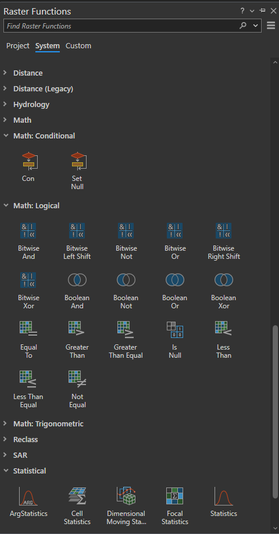- Home
- :
- All Communities
- :
- Products
- :
- Geoprocessing
- :
- Geoprocessing Questions
- :
- Analyzing and presenting change of 60 years
- Subscribe to RSS Feed
- Mark Topic as New
- Mark Topic as Read
- Float this Topic for Current User
- Bookmark
- Subscribe
- Mute
- Printer Friendly Page
Analyzing and presenting change of 60 years
- Mark as New
- Bookmark
- Subscribe
- Mute
- Subscribe to RSS Feed
- Permalink
I'm at a point in my master thesis where I don't really know what to do and it's: tadaaa - about statistics.
The thesis is about a comparative vegetation mapping.
I mapped a large area phytosociologically and according to a certain systematics.
The area has been mapped according to the same systematic 30 and 60 years ago as well. So now I can see and analyze the changes (climate change, overfertilization etc.). Of course, the whole thing runs digitally supported with a geoinformation system (ArcMap 10.8).
Here's the problem:
I have three phytosociological mappings from the same area. Two historical ones from the 60s and 90s and my current one.
I have all digitized as vector data (polygons) in ArcMap.
My goal is to somehow statistically capture the change.
For this I can
1) look at the overall balances of the various plant communities (e.g., bristly grass lawns have declined in favor of intensive grassland taken as a whole). I can just so manage calculating that :D.
2) Consider the individual areas of the different biotope types in the sense of "which areas have developed where". Because this consideration falls out in a total balance of 1). For example, if an area has developed over the years from a bristly grass lawn to a rich meadow, but on another area vice versa, this development is lost in the overall balance of 1).
Now I calculated a grid of points over the areas and got about 83.000 points with the respective information about the mapping units of the 3 time slices (coded as numbers [short integer]).
But now I struggle with the evaluation of these points.
Can you think of a suitable representation for the change? I want to see how many points have stayed the same over the years, how many have changed and HOW they have changed.
I'm thinking of both a statistical and a cartographic solution.
Hope it's reasonably clear what I'm getting at. It's actually kind of about a measure of change.
Lovely greetings and thank you 🙂
Nik
- Mark as New
- Bookmark
- Subscribe
- Mute
- Subscribe to RSS Feed
- Permalink
- intersect the points with each polygon layer
- join each output to the points
- export to a new feature class, delete unneccessary fields
- -> now you have a point feature class with 3 codes per point
- Calculate Field
- calculate 3 text fields: "Code1 -> Code2" or "No change" for 60s/90, 90s/2020s, and 60s/2020s
- For each of those fields, use Summary Statistics to get the count of points
- multiply with your point area to get the total area for each change
Have a great day!
Johannes
- Mark as New
- Bookmark
- Subscribe
- Mute
- Subscribe to RSS Feed
- Permalink
I love raster analysis, and it might work well here. You'd need to convert the three layers to coded raster layers, but once done you can use Raster Calculator (or Spatial Analyst GP tools) to do all kinds of number-running. Raster calculator is great as it is non-destructive and very fast, which helps with learning and pattern detection. eg Veg class change could be a simple Not Equal - will give a matrix with "1" where there is change, and '0' where there is not. Run twice (60s/90s and 90s/20s) and add results together to get a matix of 0(no change) 1(one change in class) or 2 (two changes in class)
